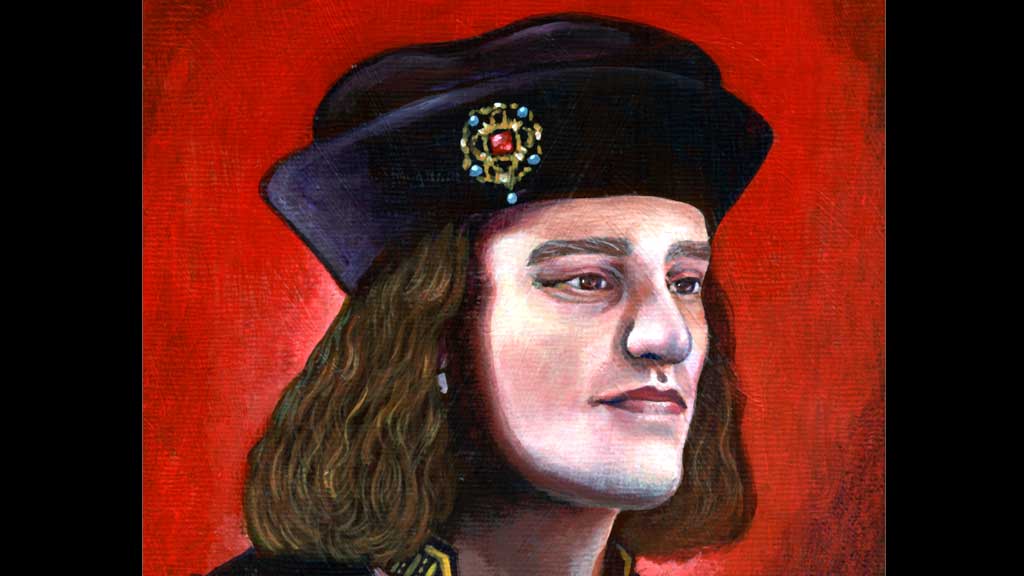Richard III burial row revived at the high court
Richard III’s descendants are challenging the governments decision to allow the remains of the former king to be buried in Leicester, close to where they were found in a car park last year.

His father may be known as Richard of York – the same one who gave battle in vain – but Richard III will, under current legislation, be reburied in Leicester after his remains were recovered in the area last year.
Leicester City Council has already started building a new £4m visitor centre and has picked out Leicester Cathedral to house the remains.
But all that could change. A full judicial review of the justice secretary’s decision to allow Richard III’s skeleton to be buried in Leicester will be heard at the high court on Thursday, after the case was adjourned in November last year.
What we have here is a historically, culturally and politically very significant character: Richard III, the last monarch of England to die on the battlefield Matthew Howarth, lawyer
Permission for the hearing was won by the Plantagenet Alliance, a group of Richard III’s collateral descendants, who want the former monarch’s remains to be buried at York Minster.
Lawyers for the alliance will argue that the Ministry for Justice’s (MoJ) failure to carry out a proper consultation before issuing a licence to the University of Leicester was unlawful. They will say that the MoJ failed to consult the king’s descendants, the wishes of the monarch himself (if they can be determined) or the wider public.
The full hearing was was adjourned in November so that Leicester City Council could be made a defendant, along with the university and the MoJ.
Reinterring remains close to where they were recovered is a normal part of archaeological procedure. But the alliance argue that this case is far from run of the mill.
“What we have here is a historically, culturally and politically very significant character: Richard III, the last monarch of England to die on the battlefield,” Matthew Howarth, partner at Yorkshire law firm Gordons, told Channel 4 News (see video below).
“It’s a decision as to where the bones should be buried, which should not be done by the way of a pro forma rubber stamping exercise. There should have been consultation.”
If it is overturned at this stage, it will open up the decision of where he should be buried to further discussion, but will not automatically mean that the monarch is reinterred in York.
During the two day hearing, the alliance will hope to persuade the court that a consultation should be undertaken for such a significant – and unprecedented – situation.
Mr Justice Haddon-Cave, the judge who gave permission for the challenge, has previously called on both parties to avoid starting “War of the Roses part two”: a “unseemly, undignified and unedifying legal tussle”. He has recommended the issue be brought to an independent panel of experts.
Mr Howarth said the alliance agreed with the judge, and blamed the Leicester parties for bringing the decision to court.
The University of Leicester started to excavate a city council carpark in the autumn of 2012, after being granted a section 25 licence under the Burial Act.
Experts confirmed that the remains they found belonged to the former king’s, after matching DNA samples from the skeleton to that of a distant relative. Investigators thanked Channel 4 for the role it played in solving the mystery, and the documentary Richard III: the king in the car park, was aired in February last year.
‘My kingdom for a horse!’
Richard III was born in 1452 at Fotheringay Castle in Northamptonshire and was the last Yorkist king of England. His father was Richard Plantagenet, Duke of York, and his mother Cecily Neville.
He died at the battle of Bosworth but the exact location of his remains was lost due to 500 years of development in the town. His death marked the end of the bloody War of the Roses, one of the major causes of which was his father’s conflict with Henry VI.
Shakespeare portrayed the king exclaiming: “A horse! A horse! My kindgom for a horse!”
-
Latest news
-
Stormzy opens Merky FC HQ to provide youth opportunities in Croydon4m

-
Britain’s Olly Alexander addresses Israel Eurovision controversy3m

-
‘Greens have made huge gains‘, says party co-leader4m

-
Rishi Sunak faces pressure to ‘change course’ following Tory election defeats3m

-
Israel closes Gaza border crossing after nearby Hamas rocket fire – as ceasefire talks continue3m

-




